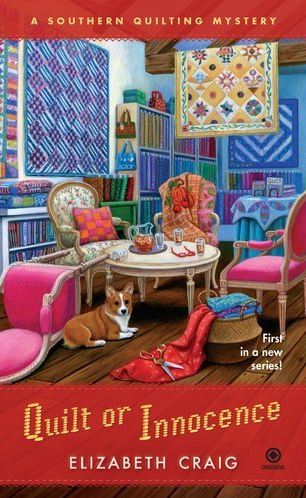Intriguing Observations: Detective Techniques in Fiction Writing
The Intriguing Observations series was created to gather some of the greatest supporters and bloggers to provide their own insight on all things creative both in their ventures and their techniques. This week on the guest series is another all-star supporter and author of the Memphis
Barbeque series for Penguin/Berkley (as Riley Adams), Elizabeth Craig. (@elizabethscraig)
If you think about it, writers use a lot of detective techniques in the process of drafting a
novel…even those who write other genres. Below are a combination of investigative techniques
and skills that detectives may use to solve a case—or that writers might use to pen a novel. Power of observation: Like the famous Sherlock, detectives use their highly-honed powers of
Power of observation: Like the famous Sherlock, detectives use their highly-honed powers of
observation to find clues to the killer. Writers are naturally talented at observation—when we
want to be. We just have to make the time to focus and turn that gift on. There are characters
surrounding us everywhere—and they’ve all got different voices, different mannerisms, quirks,
and tics. Recording them is not only a fantastic way to practice writing description—it’s also a
way to form a repository of material for future use.
Logical deductions: Detectives don’t have to have a clear trail marking from Exhibit A to the
suspect—they use clues to make deductions about their evidence. In a similar way, we should
allow our readers to make deductions instead writing a tedious trail from one thing to another.
Writers put in all kinds of filler text when we write…as if the reader doesn’t know when our
character gets in his car that he’s going to arrive somewhere at some point. Better to say: When
John arrived at the bank… instead of: John got into the car. He closed the car door and started
the engine. John drove at a fast pace three blocks to the bank. He parked in a parking deck, got
out of the car, and slammed the door behind him. If we put that type of filler in a first draft, we
can edit it out later. But time passes in a story—and we don’t have to explain that to our savvy
readers.
Gathering clues: Detectives gather clues to learn more about suspects and what they might
be capable of. Writers can leave clues to character personality and appearance for their readers
to gather. What do our characters look like? What are they like, as people? We can leave the
reader clues to gather instead of providing a laundry list of description. Instead of stating that a
character is extremely tall, we can have him ducking under a doorway. Instead of stating that a
character is a class clown, we can write him some humorous dialogue. Our readers love picking
up on these clues to characters.
Effective questioning of suspects—or effective dialogue sequences: Where detectives need to
extract information from suspects without making them defensive, writers need to craft dialogue
to effectively provide information to the readers. This means that our dialogue is not particularly
realistic. Otherwise, it would be full of filler like our own conversations usually are. Instead,
with dialogue, it should help to either move the story forward or develop a character—or both.
What detective techniques do you use as a writer? What kinds of skills are you working on (my
descriptions will always be a work in progress!)

Barbeque series for Penguin/Berkley (as Riley Adams), the Southern Quilting mysteries for
Penguin/NAL, and the Myrtle Clover series for Midnight Ink and independently. She blogs at
Mystery Writing is Murder.
Writer's Knowledge Base--the Search Engine for Writers
Twitter: @elizabethscraig

